- Home
- D. H. Lawrence
Lady Chatterley's Lover Page 3
Lady Chatterley's Lover Read online
Page 3
Who was Annable? One must remind oneself of the British novel as it was in the year 1911 to recognize what an extraordinary figure he is, standing there so clearly from the beginning, in that first novel, written when Lawrence was a very young man. Whether he had some prototype in actuality we will probably never know, and it is of no importance that we should know; certainly he had none in fiction. What is important is simply to observe that he was uniquely there—there from the beginning in Lawrence’s imagination as the figure who asserts that modern civilized society is insane, and who without compromise rejects it. Nothing that one might say of ideas of primitivism and of the natural man as these had been used in the writing of the two preceding centuries would in any way reduce his uniqueness.
He was a man of one idea:—that all civilization was the painted fungus of rottenness. He hated any sign of culture. I won his respect one afternoon when he found me trespassing in the woods because I was watching some maggots at work in a dead rabbit. That led us to a discussion of life. He was a thorough materialist—he scorned religion and all mysticism. He spent his days sleeping, making intricate traps for weasels and men, putting together a gun, or doing some amateur forestry, cutting down timber, splitting it in logs for use in the hall, and planting young trees. When he thought, he reflected on the decay of mankind—the decline of the human race into folly and weakness and rottenness. “Be a good animal, true to your animal instinct,” was his motto. With all this, he was fundamentally very unhappy—and he made me also wretched.
Annable’s difficulty is that he is not only an animal (as his name is not quite that word), but also a human being with a civilized experience behind him. The son of a prosperous father, he had been enrolled at Cambridge, had taken orders and served as curate to a fashionable rector, and had married (unhappily, in the end) a lady; yet now he lives in brutish squalor, amid a swarm of soiled children and a slatternly, illiterate woman, and strives not to lift his mind above these chosen circumstances. He does not manage to survive his choice. Yet he serves his function in providing a kind of choral emphasis in a novel that is concerned with the thinning out of human relationship amid a general deterioration of life. He serves no less to emphasize Lawrence’s success in developing the character and situation of his last gamekeeper. His success with this figure is Lawrence’s vindication of his crude attempt with Annable, just as it is the payment of his longstanding debt to the humanity of his own father. This is not so much a matter of psychological as it is of aesthetic maturity; Lawrence had found precisely the way that he wished to speak. For if Lady Chatterley’s Lover concludes a long thematic history, it concludes no less a history of forms.
Lawrence was, of course, three things: he was a man in search of a life; he was a prophet in search of a revelation; and he was an artist in search of a convention. The first formed the second, and the second created the problems of the third, but it is only the third, finally—or the third as containing the others—that we can with much profit consider in the name either of criticism or of thought.
In a recent enthusiastic book on Lawrence by an Anglican priest who writes under the name of Father Tiverton, we are shown that the spirit of Lawrence’s work was not at all inimical to much that is central in Christian thought, and also that this spirit makes him the kind of artist that he is. And how simply Father Tiverton puts it! “He reached the point in imaginative being at which the preacher and the poet coincide, since the poem is the sermon.” The whole poem, of course, or the whole story, or the whole novel, not any set of extractable words or scenes that exist only as a portion of those wholes. This primary axiom of all reading and all criticism applies nowhere more drastically than to Lady Chatterley’s Lover.
To reach the point where the preacher and the poet coincide formally was not a simple matter. We have already observed something of Lawrence’s intellectual progress, how in novel after novel, the imaginative test qualifies the theoretical conviction. Thus Lawrence’s mind constantly moved as each novel shrugged off its predecessor, at the same time that his techniques moved through a wide range of fascinating experimentation (still almost entirely unexamined by criticism) in his attempt to accommodate what was theoretically dear to him to the dearer forms of fiction. In both the broadest and the most special sense, Lawrence is first of all the artist: he gives primacy to the “living tissue” of imaginative experience and his craft is constantly moving and moving always on a dynamic base.
All this is to say nothing at all about those sporadic bursts of “genius” (“A great genius, but no artist,” runs the cliché) that even the unfriendliest critics grant, those “fitful and profound insights” that even Mr. Eliot, for example, finds it possible to allow; it is only to say that in the one important way that a man is an artist, Lawrence was an artist: that he knew where his real life was lived. Once this obvious matter can be established (and Father Tiverton went far in doing just that), we can begin to analyze the spurts of genius and their place in the whole art, or even, conceivably, to describe the constant artist.
Lawrence, the constant artist, made constant demands on the forms of fiction that had not been made in the past. “It is the way our sympathy flows and recoils that really determines our lives,” he wrote in the famous ninth chapter of Lady Chatterley’s Lover.
And here lies the vast importance of the novel, properly handled. It can inform and lead into new places the flow of our sympathetic consciousness, and it can lead our sympathy away in recoil from things gone dead. Therefore, the novel, properly handled, can reveal the most secret places of life; for it is in the passional secret places of life above all, that the tide of sensitive awareness needs to ebb and flow, cleansing and freshening.
Among the “things gone dead” (and it is only one) is the conventionalized, the calcified ethic of Christianity, and it was Lawrence’s belief that the human consciousness was capable of regeneration if only it could be led away from the rubble into “new places.” “…for wide masses of people,” John Lehmann wrote in 1947, in a plea for a renewal of “the world of love,”
the Christian symbols as they have known them have ceased to be significant, and their desperate need is to find new symbols—even if those symbols should lead us back to a rediscovery of the central meaning of Christianity, restored through the discarding of outworn and corrupted images, and irrelevant accretions of fact.
Although Mr. Lehmann himself found the mass of Lawrence’s symbols inadequate to this end, one can argue—and so Father Tiverton argued—that this attempt was precisely Lawrence’s. His wish was to take the sacraments out of their merely institutional bindings and to reassert the sacramental nature of life itself.
The old Church knew best the enduring needs of man, beyond the spasmodic needs of today and yesterday.… For centuries the mass of people lived in the rhythm, under the Church. And it is down in the mass that the roots of religion are eternal. When the mass of a people loses the religious rhythm, that people is dead, without hope. But Protestantism came and gave a great blow to the religious and ritualistic rhythm of the year, in human life. Nonconformity almost finished the deed. Now you have a poor, blind, disconnected people with nothing but politics and bank-holidays to satisfy the eternal human need of living in ritual adjustment to the cosmos in its revolutions.… Mankind has got to get back to the rhythm of the cosmos, and the permanence of marriage.
“I am a profoundly religious man,” Lawrence once said of himself, and when Father Tiverton comes to the concluding point in his discussion, where he wishes to state the central fact about Lawrence’s view and his art, he writes: “I should claim that one of the great virtues of Lawrence was his sense of the ISness rather than the OUGHTness of religion… he believed in his dark gods not because they ‘worked,’ but because they were true.”
But how, in the realistic tradition of the British novel, was the artist to communicate the “ISness of religion”? Of the first three novels, where the content is suited to the realistic convention, Sons and L
overs is successful even though it is in that work that Lawrence discovers that what he wants his work to communicate is a more essential reality than “that hard, violent style full of sensation and presentation” (as Lawrence himself described it) was capable. The Rainbow and Women in Love are his extended attempt at a form that will accomplish this end. The first begins as a traditional family chronicle and ends in a Blakean vision; the second consolidates the visionary and the hallucinatory effects of the first, and they dominate the whole. Neither is a novel in any traditional sense, not even a “psychological novel.” They are psychic dramas in which primary human impulses rather than human personalities struggle and embrace, and they end with heroes who have made a journey of the soul and whose regeneration puts them beyond the conditions of that social world out of which the novel as we have known it has always come and in which it has always been rooted. In Aaron’s Rod and Kangaroo the strenuous formal attempt is relinquished; these are rather rough chronicles of real journeys in which the soul’s journey is discussed but in which no attempt is made to embody its destination in the drama. In The Plumed Serpent, an extremely ambitious work, the myth of the soul’s journey coalesces happily with the primitive Mexican myth that the heroes are attempting to revitalize in Mexican political life and that makes up the bulk of the story; it ends with the European heroine’s conclusion that the Mexican myth may be good for the Mexicans but that it is of small use to her, and she lapses back into the condition of her social world, saying, “But I can fool them so they shan’t find out.” She will take from them what is of use to her, for as long as may be.
In many of his short stories and in his short novels, Lawrence managed to maintain a realistic framework within which rich symbolic modulations that far transcend realism could be beautifully contained. In the shorter fiction, too, he could break into pure symbolic forms, as in The Woman Who Rode Away, or into splendid fable, as in The Man Who Died. But even as he managed more and more successfully to handle action that in itself was ritualistic and prose that was liturgical, the convention of the realistic novel could not be made wholly to yield. The progress from the first through the third version of Lady Chatterley is the history of an effort to make the events at once maximumly plausible in realistic terms and maximumly meaningful in psychic terms. The result in the third version is a novel in a solid and sustained social context, with a clear and happily developed plot, in which the characters function fully and the author allows them to speak for themselves; at the same time it is a novel in which everything is symbolic, in which “every bush burns,” and which in itself finally forms one great symbol, so that one can easily remember it as one remembers a picture. In the background of this picture black machinery looms cruelly against a darkening sky; in the foreground, hemmed in and yet separate, stands a green wood; in the wood two naked human beings dance.
III
The first Lady Chatterley is a relatively short, dark, and above all rough sketch written under the pall of recently experienced English gloom; the second, written after the Etruscan adventure, is much longer and leaps out of the dreariness of the first, with a strong infusion of lyric feeling and natural vitality that must derive from Lawrence’s experience of the brilliantly sensuous tomb paintings at Tarquinia and elsewhere; the third, written after a hard and alarming illness, is about the same length as the second, but there is a sharpening of intellectual issues and a deepening of pathos. These are the large general changes, and if we add to them the fact that in each version as it succeeds an earlier, the treatment of the sexual act becomes more and more explicit, a development as necessary to the achievement of the four qualities just listed as it was to the full dramatization of Lawrence’s theme, we have encompassed the major changes in tone and feeling. At the other end of the scale of revision are thousands of alterations in technical detail, and a systematic analysis of these changes would tell us a great deal about Lawrence the writer, but the place and time for such an analysis is a scholarly monograph that could best be published when all three texts of the novel are available to interested readers. Between these two extremes of revisionary method are a variety of changes in dramatic structure, many of which have been observed by E. W. Tedlock, Jr., in an appendix to his The Frieda Lawrence Collection of D. H. Lawrence Manuscripts (1948). It is in the interest of the present account to observe a few of these.
Lawrence’s first problem in revision seems to have been to tell his story in such a way as to achieve maximum plausibility within the terms of his own aspiration: he had to make the love of the lady and the gamekeeper convincing, and he had also to give their love a chance for survival in the world as he saw it. If we follow the alterations in the character of the keeper, in the character of Constance, and finally, in the nature of the resolutions, we will be able to see how he achieved his end.
In all three versions, the gamekeeper (called Parkin in the first two, Mellors in the third) is a man of about forty, a miner’s son who has misanthropically withdrawn from the industrial world into work in the wood. In the first and second versions, he is of medium height, with reddish-brown eyes and a shaggy mustache; in the third, he is taller, with blue eyes. In the first version he is physically strong; in the second, not so strong; in the third, sometimes rather frail. The Parkin of the first version speaks only in the vernacular; the second uses the Derbyshire dialect in scenes of affection and the king’s English when he wishes; Mellors speaks more or less like the second Parkin but is capable of much more conceptual language. The Parkin of the first version has least motivation for his misanthropy but is the most violent in asserting it. He delights in trapping poachers and getting summonses for them; to Mellors, this is an unpleasant part of his work. Where Parkin is positively churlish with Constance, Mellors is ironical and mildly derisive. The first Parkin’s motivation lies in a smashed marriage with a brutish woman; the second Parkin’s motivation lies in the same marriage, but with a background of an awkward sexual trauma that unfits him for any other woman and yet does not fit her for him. In Mellors, the sexual background is amplified but the traumatic experience disappears: he has had love affairs with young women drawn exactly on the models of the Helena and Miriam of Lawrence’s second and third novels—romantic, “spiritual’’ women who offended his manhood, and from these he had turned to the “common” girl, Bertha, whom he married, but who revealed at once a ferocious sexual will under the force of which the marriage passed swiftly into brutish deterioration. From this marriage, Mellors escaped into the world, and the world of gentlemen: he had become an officer’s aide in India. Now, in his cottage, he has books that he can read and talk about, and he is Constance’s equal in all but birth. The original Parkin is something of a clown as well as a boor: “The skirts of his big coat flapped, his brown dog ran at his heels. He was once more going to take the world by the nose.… He strode with a grand sort of stride, baggy coat-tails flapping. The son of a man goes forth to war! She smiled to herself grimly.” The second Parkin still has “a rather sticking-out brown mustache,” but “His bearing had a military archness and resistance that was natural to him.” Mellors has not only the military background itself, but, along with “a certain look of frailty,” natural gentility, and when Constance sees him in town, “tall and slender, and so different, in a formal suit of thin dark cloth,” she reflects that “he could go anywhere. He had a native breeding which was really much nicer than the cut-to-pattern class thing.”
In Constance Chatterley, the changes are perhaps less drastic, but they are no less important to her motivation. In the first version, she has had a certain continental experience but it has hardly made her worldly; in the second version, she has had a continental education; in the third version, she has not only had a continental education but also a series of casual, “intellectual” love affairs before her marriage. She is still “a ruddy, country-looking girl with soft brown hair and a sturdy body, and slow movements, full of unused energy,” but she is also a woman whose experience has equipped h
er to take the full measure of her world. Her marriage ruined by Clifford’s physical incapacity, she has, in her third figuration, a casual postmarital affair (and is encouraged in this conduct by her friends, her father, even her husband). In the third version, Lawrence introduces the character of Michaelis, a successful, trivial playwright, to put Constance at the very center of the full emptiness of this social-intellectual world. This motivation is of first importance, for it places Mellors and Constance in precisely the same situation: an experienced man and woman, both disillusioned with their experience, both capable of a better experience. With the minimization of the class barrier between Connie and Mellors and the amplification of their similar sexual defeat, Lawrence achieves the psychological realism of the final version.
If they are ready for one another, they still face the problem of finding a world that is ready for them. As only a glance at the variation in the three endings will show, Lawrence had solved this problem only in part by the alterations that we have already observed. In the first version, where class barriers are strongest, and where Lawrence is still hoping for some social role for his characters, Parkin ends as a worker in a Sheffield steel mill and as the secretary of the local branch of the Communist party. Just before the end, after Constance is shown in an impossible scene in a worker’s home, she and Parkin quarrel, and the likelihood of their finding any way out is small. In the final scene, she hopes to become his wife, simply his wife, living in his terms, sharing his interests, politics included; but our hope for her is small. In the second version, Parkin is no longer a political man and the Sheffield mills are an abomination to him; he plans to leave them for farm work. He is perhaps a little less unwilling to spend some of Connie’s money in order to find a life for themselves, if she is so determined. The novel ends with his promising to “come to Italy” in her wake, when she needs him. But here Lawrence has tried to write out the class barrier by fiat. While Constance is visiting on the Continent, she has this revelation:

 Look! We Have Come Through!
Look! We Have Come Through!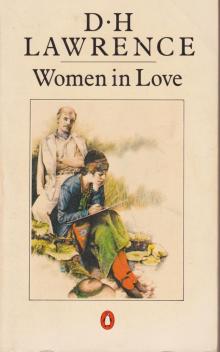 Women in Love
Women in Love The Ladybird
The Ladybird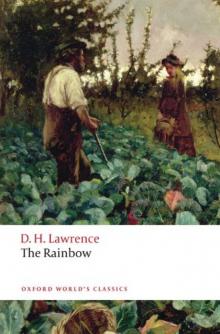 The Rainbow
The Rainbow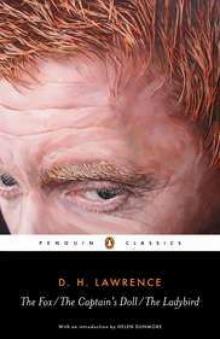 The Captain's Dol
The Captain's Dol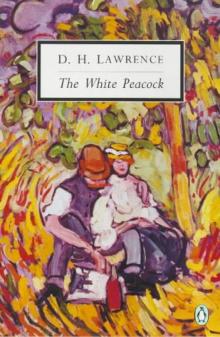 The White Peacock
The White Peacock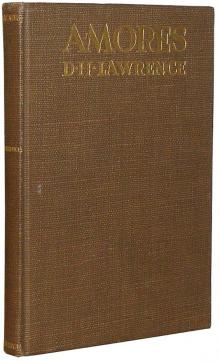 Amores
Amores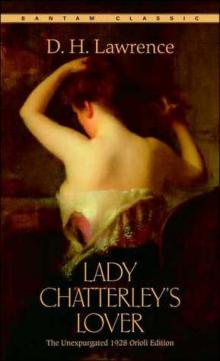 Lady Chatterley's Lover
Lady Chatterley's Lover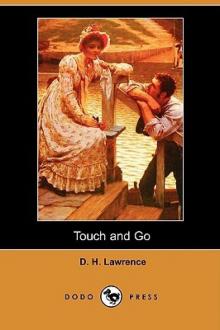 Touch and Go
Touch and Go The Wintry Peacock
The Wintry Peacock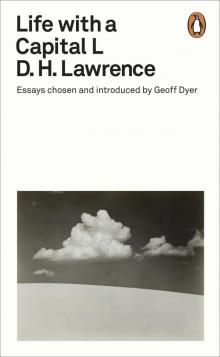 Life with a Capital L
Life with a Capital L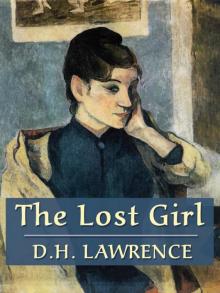 The Lost Girl
The Lost Girl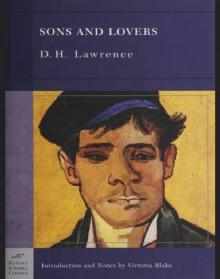 Sons and Lovers
Sons and Lovers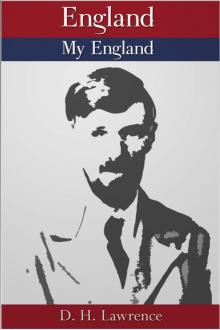 England, My England
England, My England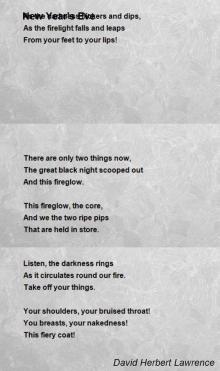 New Poems
New Poems Twilight in Italy
Twilight in Italy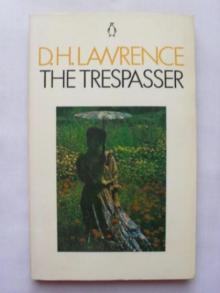 The Trespasser
The Trespasser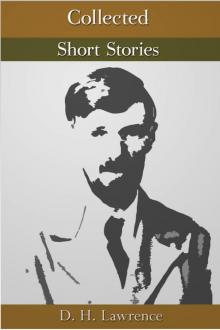 The Collected Short Stories
The Collected Short Stories The First Lady Chatterley's Lover
The First Lady Chatterley's Lover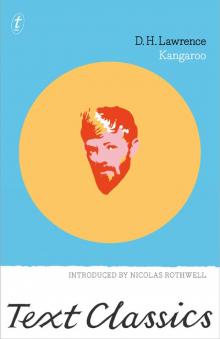 Kangaroo
Kangaroo Bay
Bay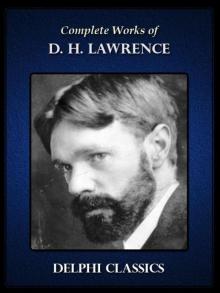 Complete Works of D.H. Lawrence
Complete Works of D.H. Lawrence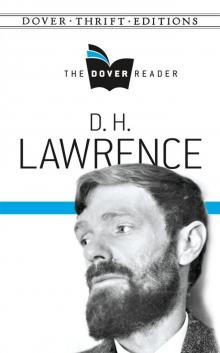 D H Lawrence- The Dover Reader
D H Lawrence- The Dover Reader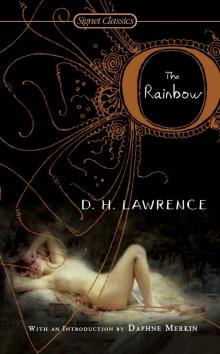 The Rainbow (100th Anniversary ed.)
The Rainbow (100th Anniversary ed.)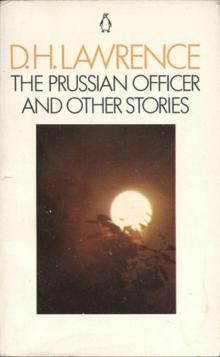 The Prussian Officer
The Prussian Officer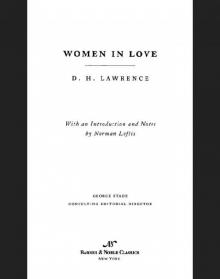 Women in Love (Barnes & Noble Classics Series)
Women in Love (Barnes & Noble Classics Series)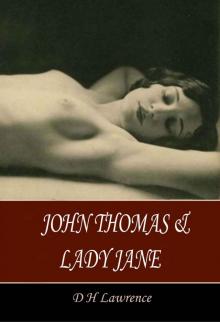 John Thomas and Lady Jane
John Thomas and Lady Jane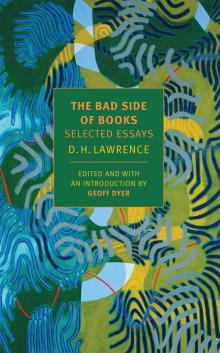 The Bad Side of Books
The Bad Side of Books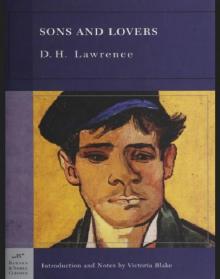 Sons and Lovers (Barnes & Noble Classics Series)
Sons and Lovers (Barnes & Noble Classics Series)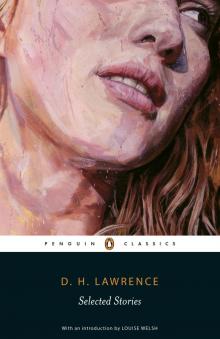 Selected Stories
Selected Stories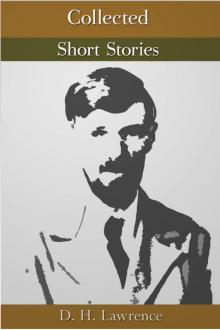 Collected Short Stories
Collected Short Stories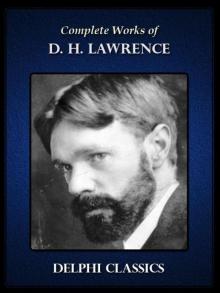 Complete Works of D.H. Lawrence (Illustrated)
Complete Works of D.H. Lawrence (Illustrated)